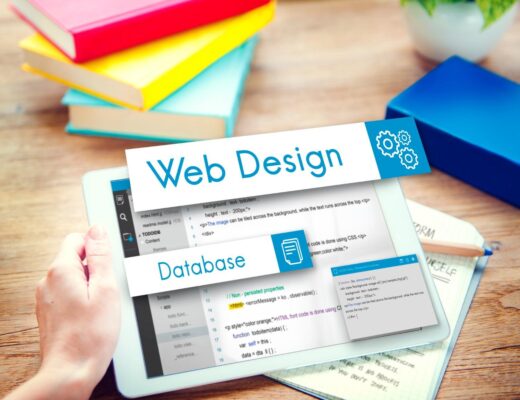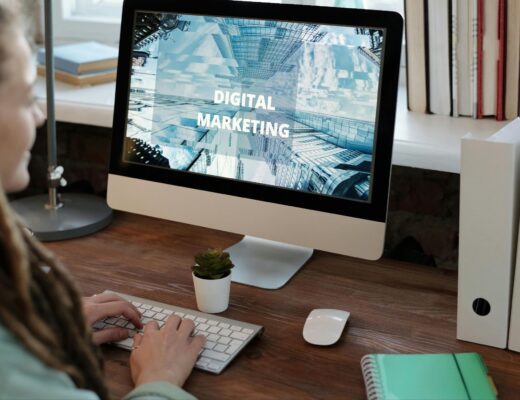1) Structure of the website
– Design the website layout with the target audience in mind
Always consider the audience during design. Therefore, the website should be user-friendly and easy to navigate. Visitors should be able to efficiently move quickly through the website to get the target information. This will help prevent the visitors from getting impatient and leaving the website. Moreover, the layout should be logical to ensure the content is easily accessible by visitors.
- Focus on the page structure
Over time there has been increased use of grid layouts because of their flexibility and Image result for good website design strategies and fluidity. Grid systems include; Bootstrap 3, 960 Grid system, Responsive grid system, and many others. The grid systems help lay out information in a well-structured and easy-to-follow format.
- Use a responsive design
The increase in the use of devices like mobile devices like mobiles, tablets, desktops, and laptops; has led to the need of having responsive websites. The website should be designed in a way that, important content is fitted within the limitations of small device screens. The website will be convenient and elegant on any device used and this will ensure strong design standards.
- Make your page design appealing
People tend to judge a website by how it looks, its design, the layout used, the theme, the colors used, the atmosphere of the website, and its overall functionality. Even in real life the first impression you make is important and determines how the other party will react. Make sure you make your design beautiful and have a lovely appearance without overdoing it.
2) Content on the website
Optimization of the website for search
Search Engine Optimization is an important aspect when it comes to generating traffic to the website. Search results mainly depend on the ranking made by search engines, that determine which information needs to be displayed for certain audiences. Brands that use websites for marketing rely on SEO to increase their visibility and for promotion. This entails the use of keywords, headings, subheadings, internal and external links, images, slideshow, Meta description, and optimized content matter. The content you write should also be relevant and efficient.
- Make the most relevant content on your page easy to find.
People like getting what they are looking for at first glance. No one is willing to struggle to get the information. A website is not like a puzzle, where you have to think about where to place a piece to fit in. People are very impatient thus the page should be easy to scan through. Use headings and subheadings to focus on the most important information and to direct it.
- Focus on the purpose of the website.
When deciding to have a website you must have a purpose for it. If it is a news website, it should be made known on the homepage so that the visitor can know what is featured. Focus on making a homepage that illustrates what you offer and the other pages to go deeper. Have call-to-action buttons to help the visitor to know what to do next.
- Keep the website simple and consistent
Easy and consistent websites can be understood and navigated with ease. Making the website simple favors all the visitors of the site. In the current world, people like getting information fast and not having to think about where to find; people are impatient. The content should be strategically placed for visibility. Simplicity entails removing any unnecessary information and putting only the relevant one
Consistency entails finding a balance between the space and the content to help highlight the relevant information. A user’s experience of the website is what matters most in the end. Using a consistent menu in the header and footer will help the visitor browse the site easily.
3) Design of the website
- Use of correct fonts
Be cautious of the fonts, use in the content because on different screens the words may be illegible and look very tiny. Use of italics in long sentences makes the text difficult to read and strains one’s eyes on some screens. Over usage of capital letters or uppercase makes the text tiresome to read and illustrate shouting and may seem rude. Main fonts should be used in the main content and a different font and size can be used in the title, headings, and subheadings.
- Utilize white space and minimalism on the website.
Having white space on the website allows the user to have a break from all the visuals. In addition, content is easily seen because of the arrangement and the page will look clear and smart. This also helps when one uses different screens. If opened in a smaller screen browser the content will still be easily visible.
- Use blending colors
When choosing colors, the website is an aspect to consider. Colors tend to influence a user’s emotions; some colors bring a gloomy feeling while other colors bring a jovial feeling. That’s why a hospital website will differ with a school’s site and a magazine site. Having a proper color scheme influences how visitors to your site will react. Don’t use too many colors; may look as a joker’s website.
4) Functionality on the website
Have simple sign-up forms and sign up button
In the case of having a sign-up form make sure it is simple and has fewer items to fill. If the information is just needed for signing up don’t overcomplicate with many fields. Asking for too much information may seem a nuisance. The visibility of a sign-up button is very crucial. The Call-to-action button should be a different color from the main menu color.
- Optimize the speed of your website.
Website loading time is very important. If the website loads slowly a visitor can easily get tired and leave the page. It is crucial to optimize the load time to around 1-2 seconds by compressing your CSS files and making images and documents optimized for web usage. In the C panel, you can compress the files via the optimize website option.
- Use the same navigation elements throughout the whole website
The navigation elements should be positioned in the same place on all pages. This is for consistency as many visitors tend to assume the menu will always be in the header and at times at the footer. It is also important to have a back-to-top button to ease going up. Not many people enjoy scrolling up after reaching the footer part.
- Have clear names or icons for menu items
Use simple words in the menu items, not complex words that will call for the usage of a dictionary. If a visitor doesn’t understand what is written can easily leave the page and look for another that communicates well. Use simple, clear, and easy words.
- Have a search form
Many users normally look for search forms to get directed to where certain information is. This applies to websites with many pages with crucial content. For instance; in the case of an online shop, people tend to search for a specific item via the search form field which makes work easier. Many search forms are normally found in the header section or at the top of the page.
- Make the configuration in a way that highlights the current page.
A user may end up clicking a page several times if he/she is not sure of the current page. Highlighting the current page on the menu item is very important and prevents the visitor from getting confused and stranded.
Discover more from Intela Designs
Subscribe to get the latest posts sent to your email.




Awesome content.
I like this website its a master peace ! Glad I found this on google .
Hi, I do think this is an excellent blog. I stumbled upon it 😉 Thank you for the insights on website success.
Do you mind if I quote a few of your articles as long as I provide credit and sources back to your website? My website is in the very same niche as yours and my users would certainly benefit from a lot of the information you provide here. Please let me know if this okay with you. Regards!
Yes, It is okay. There is no problem with that.
Wow that was unusual. I just wrote an extremely long comment but after I clicked submit my comment didn’t appear. Grrrr… well I’m not writing all that over again. Anyway, just wanted to say wonderful blog!
Thank you for the positive feedback.